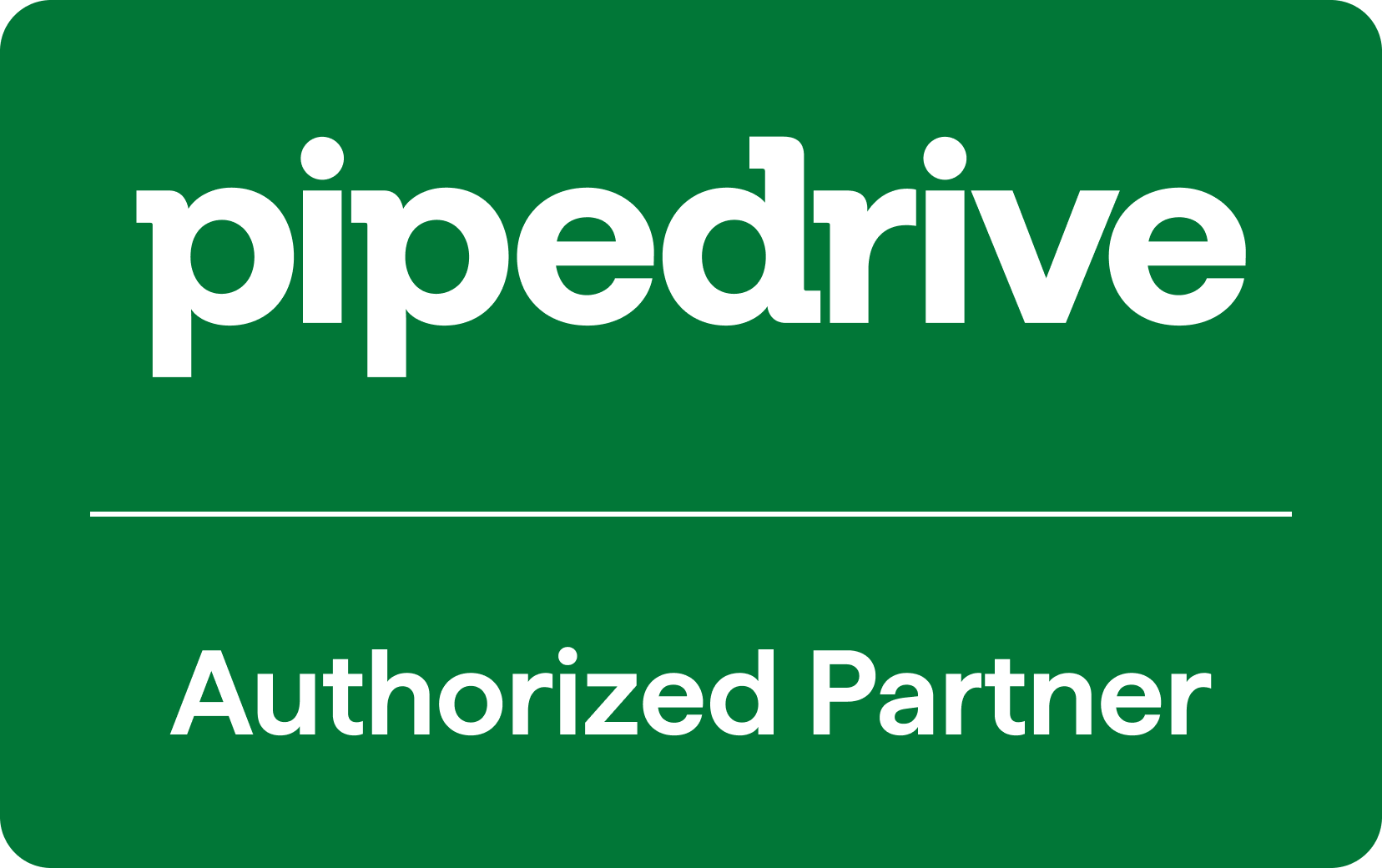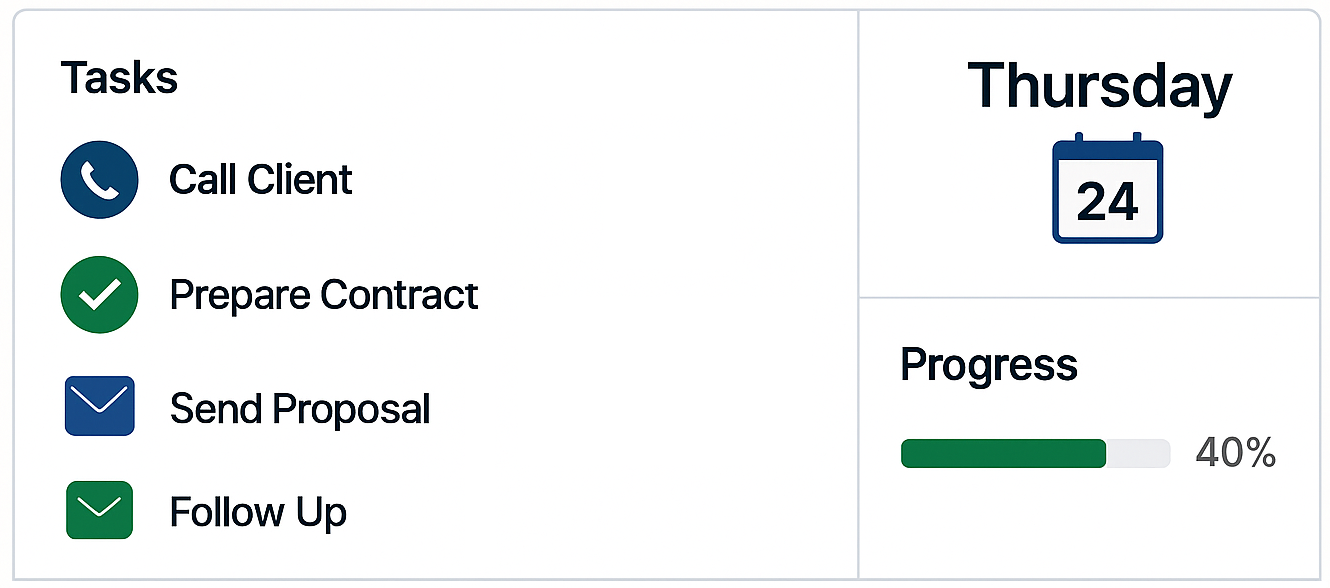
CRM
July 7, 2025
Pipedrive and Xero Numbers Don't Match?
As a business owner, you've probably experienced this frustrating scenario: you close a fantastic month in Pipedrive with deals worth $75,000 marked as "won," but when you check your Xero accounting software, the revenue shows only $45,000.
Your first instinct might be to panic - where did the other $30,000 go? Is something broken? Are your systems out of sync?
Take a deep breath. Nothing is broken, and this disconnect is completely normal. In fact, it's one of the most common sources of confusion for business owners who use both CRM and accounting systems. Understanding why this happens - and how to properly interpret both sets of numbers - is crucial for making informed business decisions.
The Fundamental Difference: Sales vs. Accounting
The disconnect between Pipedrive and Xero stems from a fundamental difference in what each system is designed to track.
Pipedrive tracks your sales process. When you mark a deal as "won" in Pipedrive, you're recording a sales commitment - a handshake, a signed contract, or a verbal agreement. This represents future revenue that you expect to collect, but it doesn't mean money has changed hands or that an invoice has been created.

Xero tracks your financial transactions. Even with accrual accounting enabled, Xero only records revenue when you actually create an invoice. It doesn't care about your sales pipeline or when deals were marked as won - it only cares about documented financial transactions.
This creates a natural timing gap. A deal won in January might not be invoiced until March due to project timelines, payment terms, or delivery schedules. Some deals might be invoiced in installments over several months. Others might never convert to actual invoices at all - perhaps the client changes their mind or the project scope shifts dramatically.
Real-World Example: The Consulting Firm
Let's look at a practical example. Sarah runs a marketing consulting firm and uses Pipedrive to manage her sales pipeline and Xero for accounting.
In January, Sarah closes three major deals in Pipedrive:
- Deal A: $15,000 (3-month retainer starting February)
- Deal B: $25,000 (website project, payment on completion)
- Deal C: $35,000 (annual contract, invoiced quarterly)
Her Pipedrive dashboard shows $75,000 in deals won for January - an excellent month!
But here's what actually hits Xero:
- January: $0 (no invoices created yet)
- February: $20,000 (Deal A's first month + Deal C's first quarter)
- March: $5,000 (Deal A's second month only)
- April: $5,000 (Deal A's final month)
- May: $25,000 (Deal B completed and invoiced)
Sarah's Xero shows May as her best month ($25,000), but her sales team knows January was actually the strongest month for new business acquisition. Both perspectives are correct - they're just measuring different things.
Why This Disconnect Matters
Understanding this difference is crucial for several reasons:
Cash Flow Management: Your Pipedrive numbers tell you about future cash flow, while Xero tells you about current cash flow. You need both perspectives to manage your business effectively. A strong month in Pipedrive might not translate to strong cash flow for several months.
Performance Evaluation: If you're evaluating your sales team's performance based on Xero revenue, you might be measuring the wrong thing. Sales teams should be measured on deals closed (Pipedrive), while the business's financial performance should be measured on actual revenue (Xero).
Growth Planning: When planning for growth, you need to understand both your sales velocity (how quickly you're closing deals) and your revenue recognition patterns (how quickly those deals turn into cash).
Investor Relations: If you're seeking investment or reporting to stakeholders, you'll need to explain both your sales pipeline strength and your financial performance. Investors want to see both leading indicators (sales) and lagging indicators (revenue).
Common Scenarios That Increase the Disconnect
Several business models and practices can amplify the disconnect between Pipedrive and Xero:
Project-Based Businesses: If you deliver projects over time, there's often a significant gap between when a deal is won and when it's invoiced. A web design agency might close a deal in January but not invoice until the website is completed in April.
Retainer and Subscription Models: Monthly retainers create a predictable revenue stream, but the initial deal value in Pipedrive might represent 6-12 months of future revenue that will be recognized monthly in Xero.
Milestone-Based Payments: Large projects with milestone payments create uneven revenue recognition. A $100,000 consulting project might be invoiced as $25,000 at project start, $50,000 at mid-point, and $25,000 at completion.
Seasonal Businesses: Companies with seasonal sales cycles might close most deals in one quarter but deliver (and invoice) the work in another quarter.
Complex Approval Processes: B2B companies with long approval cycles might have deals sitting in "won" status for weeks or months before contracts are signed and invoicing can begin.
Creating Visibility: The Dashboard Solution
To help business owners understand their complete picture, create a comprehensive dashboard that bridges both systems. Here's what to include:
Sales Pipeline Metrics (from Pipedrive):
- Monthly deals won by value
- Number of deals won
- Average deal size
- Sales velocity (time from lead to close)
- Pipeline health by stage
- Conversion rates between stages
Financial Performance Metrics (from Xero):
- Monthly revenue (invoiced)
- Monthly cash receipts (payments received)
- Outstanding receivables
- Average collection time
- Monthly recurring revenue (for subscription businesses)
The Bridge Metrics:
- Won deals awaiting invoicing
- Average time from deal won to first invoice
- Percentage of won deals that convert to invoices
- Forecast of when current won deals will hit the books
Practical Steps to Implement
Step 1: Set Up Proper Tracking
Ensure your Pipedrive deals include expected invoice dates and payment terms. This helps predict when won deals will appear in Xero.
Step 2: Create a Reconciliation Process
Monthly, compare your Pipedrive won deals to your Xero invoices. Track deals that are taking longer than expected to invoice and understand why.
Step 3: Establish Clear Definitions
Define what constitutes a "won" deal in Pipedrive. Is it a signed contract? A verbal agreement? A purchase order? Consistency is key.
Step 4: Implement Revenue Forecasting
Use your Pipedrive data to forecast future Xero revenue. This helps with cash flow planning and business decision-making.
Step 5: Train Your Team
Ensure everyone understands the difference between sales performance and financial performance. Sales teams should focus on Pipedrive metrics, while finance teams focus on Xero metrics.
Integration Options
While the numbers will never match perfectly, you can reduce manual work through integration:
Zapier Integration: Automatically create Xero invoices when Pipedrive deals reach a certain stage. This reduces the time gap between won deals and invoicing.
Native Integrations: Some tools offer direct integration between Pipedrive and Xero, allowing for automatic data sync and reducing data entry errors.
Custom Dashboards: Tools like Tableau, Power BI, or even Google Sheets can pull data from both systems to create comprehensive reporting.
The Bottom Line
The disconnect between your Pipedrive and Xero numbers isn't a bug - it's a feature. Each system serves a different purpose in your business operations. Pipedrive helps you manage and optimize your sales process, while Xero helps you manage your financial position.
Instead of trying to make these numbers match, focus on understanding what each system tells you about your business. Use Pipedrive to measure sales team performance, pipeline health, and future revenue potential. Use Xero to measure current financial performance, cash flow, and profitability.
The most successful business owners use both perspectives to get a complete picture of their business. They celebrate strong months in Pipedrive while planning for the cash flow implications. They use Xero to understand their current financial position while using Pipedrive to forecast future performance.
Remember: your sales pipeline is a leading indicator of future financial performance, while your accounting system is a lagging indicator of past sales success. Both are valuable, both are necessary, and both tell different parts of your business story.
By understanding and embracing this difference, you'll make better business decisions, have more accurate forecasts, and eliminate the frustration that comes from expecting two different systems to tell the same story. Your business will be stronger for it.
If you'd like to discuss setting up your own comprehensive sales and financials dashboard with Pipedrive & Xero, or to learn more about Process Culture's Pipedrive consulting services, contact us today or visit our Pipedrive Consulting page.





